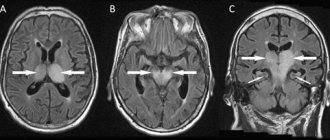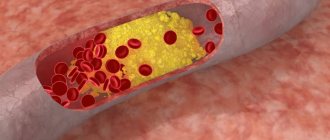Demyelinating disease is a pathological process of destruction of the myelin sheath that affects neurons in the brain and spinal cord. At the same time, the conductivity of impulses in the nervous system deteriorates. The disease is characterized by the destruction of brain myelin. This dangerous condition affects the functioning of the entire body. The disease occurs with equal frequency in both adults and children. Modern medicine does not have the means to completely cure this disease. It can only be weakened and the flow slowed down.
Demyelination
Demyelinating brain disease according to ICD-10 has codes G35, G36 and G77. The process caused by damage to the nervous tissue negatively affects the functioning of the entire organism as a whole. Certain nerve endings are covered with a myelin sheath, which performs important functions in the body. For example, myelin ensures the rapid transmission of electrical impulses and, accordingly, if this process is disrupted, the entire system suffers. Myelin consists of lipids and protein compounds in a 70/30 ratio.
Expert opinion
Author: Daria Olegovna Gromova
Neurologist
The most common demyelinating brain disease is multiple sclerosis. Its symptoms are very diverse, so the patient rarely immediately comes to a neurologist. Decreased vision, numbness of the limbs, problems with motor skills - different doctors give different recommendations, although it is enough to simply send the patient for an MRI and laboratory tests that will confirm fears or rule out brain diseases.
Demyelinating disease is not only multiple sclerosis, it is also neuromyelitis optica and acute disseminated encephalomyelitis. These diseases have no cure, but their progression can be slowed down. In general, doctors give a favorable prognosis when treating these pathologies. The diagnosis of “multiple sclerosis” is now made more often, but the disease itself is milder than 30-40 years ago.
Thanks to modern methods of therapy and research, a benign course is observed in approximately half of the cases - patients fully retain their ability to work, start families, and give birth to children. There are some restrictions, for example, visiting baths and saunas, prolonged exposure to the sun is prohibited, but otherwise the lifestyle remains the same, no special diets are needed.
Development mechanisms
The nervous system consists of central and peripheral sections. The regulation mechanism between them works as follows: impulses from the receptors of the peripheral system are transmitted to the nerve centers of the spinal cord, and from there to the brain. The disruption of this complex mechanism causes demyelination.
Nerve fibers are covered with a myelin sheath. As a result of the pathological process under consideration, this membrane is destroyed and fibrous tissue is formed in its place. She, in turn, cannot conduct nerve impulses. In the absence of nerve impulses, the functioning of all organs is disrupted, since the brain cannot issue commands.
Common diseases
Multiple sclerosis is a demyelinating, autoimmune disease with a chronic course that affects the main elements of the nervous system (brain and spinal cord). As the pathology progresses, normal brain structures are replaced by connective tissue. The lesions appear diffusely. The average age of patients is 15-40 years. Prevalence – 30-70 cases per 100 thousand population.
Hemorrhagic leukoencephalitis, which occurs in an acute form, develops due to damage to small elements of the vascular system. Often defined as a post-infectious complication with a pronounced autoimmune reaction. It is characterized by rapid progression of the inflammatory process and numerous focal lesions of brain tissue, accompanied by cerebral edema, the appearance of foci of hemorrhage, and necrosis.
The precursor to the pathology is usually diseases of the upper respiratory tract of infectious etiology. The disease can also be triggered by influenza and Epstein-Barr viruses or sepsis. Usually leads to death. Death occurs due to cerebral edema within 3-4 days from the onset of the first symptoms.
Necrotizing encephalopathy, which occurs in an acute form, is characterized by multifocal, symmetrical damage to brain structures of a demyelinating nature. Accompanied by tissue swelling, necrosis and the appearance of foci of hemorrhage. Unlike hemorrhagic leukoencephalitis, cells indicating an inflammatory process - neutrophils - are not detected.
Often develops against the background of a viral infection, manifested by epileptic seizures and confusion. There is no pleocytosis (abnormally increased concentration of lymphocytes) in the cerebrospinal fluid; the concentration of protein compounds is increased. An increased concentration of aminotransferase is detected in the blood serum. It develops sporadically (in single cases) or due to a hereditary gene mutation.
Pseudotumorous demyelination is manifested by general cerebral and focal cerebral symptoms. In 70% of cases it is accompanied by edema of the brain matter with an increase in intracranial pressure. Foci of demyelination are detected in the white matter during an MRI study of the brain using a contrast agent.
Balo's sclerosis (concentric) is manifested by pain in the head, pathological changes in behavior, cognitive disorders, epileptic seizures, hemisyndromes (neurological disorders in one half of the body). The course of the pathology clinically resembles the development of an intracerebral tumor. Foci of tissue damage are most often observed in the white matter.
Lymphocytic pleocytosis and an increased concentration of protein compounds are detected in the cerebrospinal fluid. The presence of oligoclonal antibodies is often observed in smaller quantities than in normal multiple sclerosis. An MRI scan shows signs of brain tissue damage typical of multiple sclerosis.
The images clearly show multiple ring-shaped foci of demyelination in the white matter, often in the frontal lobes of the brain, surrounded by characteristic areas of remyelination (restoration of normal myelin). In most cases, death occurs within several weeks or months of the acute course of the pathology. With early diagnosis, the prognosis is more favorable.
Causes
Demyelinating diseases of the brain are characterized by damage to the peripheral and central nervous systems. They most often occur against the background of a genetic predisposition. It also happens that a combination of certain genes provokes disturbances in the functioning of the immune system. There are other causes of demyelinating diseases:
- state of chronic or acute intoxication;
- solar radiation;
- ionizing radiation;
- autoimmune processes in the body and genetic pathologies;
- complication of bacterial and viral infection;
- poor nutrition.
The Caucasian race is considered to be the most susceptible to this pathology, especially those representatives who live in northern latitudes. This type of disease can be provoked by a head or spinal injury, depression, or bad habits. Some types of vaccines can also trigger the development of such pathologies. This applies to vaccinations against measles, smallpox, diphtheria, influenza, whooping cough, and hepatitis B.
Types of demyelinating diseases
The classification of demyelinating diseases involves division into myelinopathy and myelinoclasty. In the first case, the destruction of myelin occurs due to a disruption in the formation of the substance, a change in its biochemical structure due to genetic mutations. This is often a congenital pathology (there is also an acquired form), the signs of which are observed in early childhood. Hereditary myelinopathies are called leukodystrophies. Acquired myelinopathies, depending on the causes of occurrence, are divided into types:
- Toxic-dysmetabolic. Associated with intoxication and metabolic disorders in the body.
- Hypoxic-ischemic. They develop against the background of impaired blood flow and oxygen starvation of brain tissue.
- Infectious and inflammatory. Triggered by infectious agents (pathogenic or opportunistic microorganisms).
- Inflammatory. Non-infectious etiology (occurs without the participation of an infectious agent).
- Traumatic. They arise due to mechanical damage to brain structures.
With myelinoclasty, myelin synthesis proceeds normally, the membrane cells are destroyed under the influence of external and internal pathogenic factors. The division is arbitrary because myelinopathy often progresses under the influence of negative external factors, while myelinoclasty usually occurs in patients with a predisposition to myelin damage.
Demyelinating diseases are divided according to the location of the lesions into types that affect the central nervous system or the peripheral nervous system (PNS). Diseases that develop in the structures of the central nervous system include multiple sclerosis, leukoencephalopathies, leukodystrophies, Balot (concentric) and Schilder (diffuse) sclerosis.
Damage to the fiber sheaths of the PNS provokes the development of diseases: Charcot-Marie-Tooth amyotrophy, Guillain-Barré syndrome. Examples of acquired myelinopathies: Susak and CLIPPERS syndromes. A common inflammatory myelinopathy of non-infectious etiology is multiple sclerosis.
This group includes quite rare types of sclerosis: multiple encephalomyelitis, pseudotumorous demyelination, hemorrhagic leukoencephalitis, Balo and Schilder’s sclerosis. Infectious-inflammatory forms include HIV encephalitis, sclerosing panencephalitis, cytomegalovirus encephalitis. An example of a toxic-metabolic form is demyelinating syndrome of the osmotic type, an example of a hypoxic-ischemic form is Susak syndrome.
Classification
Demyelinating disease of the nervous system is classified into different types, which are based on the destruction of the myelin sheath. In this regard, the pathology under consideration is divided accordingly into multiple sclerosis, Marburg disease, Devic disease, progressive multifocal leukoencephalopathy and Guillain-Barré syndrome.
Multiple sclerosis
Multiple sclerosis is characterized as a severe chronic and immunodegenerative disease of the central nervous system, prone to progression. In most cases, the disease occurs at a young age and almost always leads to disability. This demyelinating disease of the central nervous system is assigned code G35 according to ICD-10.
Currently, the causes of the development of multiple sclerosis are not fully understood. Most scientists are inclined to the multifactorial theory of the development of this disease, when genetic predisposition and external factors are combined. The latter include:
- infectious diseases;
- state of chronic intoxication;
- taking certain medications;
- change of place of residence with a sharp change in climate;
- lack of fiber and high-calorie diet.
The relationship between the symptoms of multiple sclerosis and the stage of the disease is not always clear. The pathology can have a wave-like course. Exacerbations and remissions can be repeated at varying intervals. A feature of multiple sclerosis is that each new exacerbation has a more severe course compared to the previous one.
The progression of multiple sclerosis is characterized by the development of the following symptoms:
- sensory disturbances (goosebumps, numbness, tingling, burning, itching);
- visual impairment (impaired color rendering, decreased visual acuity, blurred picture);
- trembling of the limbs or torso;
- headache;
- speech disorders and difficulty swallowing;
- muscle spasms;
- gait changes;
- cognitive impairment;
- heat intolerance;
- dizziness;
- chronic fatigue;
- libido disturbance;
- anxiety and depression;
- stool instability;
- insomnia;
- autonomic disorders.
There are also secondary symptoms of multiple sclerosis. They imply complications of the disease. Foci of demyelination in the brain are determined using magnetic resonance imaging, including the introduction of a contrast agent.
Treatment of multiple sclerosis is carried out using methods such as:
- plasmapheresis;
- taking cytostatics;
- prescription of immunosuppressants;
- use of immunomodulators;
- taking beta interferons;
- hormonal therapy.
- symptomatic therapy with the prescription of antioxidants, nootropic drugs and vitamins.
During the period of remission, patients are prescribed sanatorium treatment, massage, and physical therapy. In this case, all thermal procedures should be excluded. To alleviate the symptoms of the disease, medications are prescribed: those that reduce muscle tone, eliminate tremors, normalize urination, stabilize the emotional background, and anticonvulsants.
Multiple sclerosis is classified as an incurable disease. Therefore, these treatment methods are aimed at reducing symptoms and improving the patient’s quality of life. The life expectancy of patients with this disease depends on the nature of the pathology.
Forecast
The survival prognosis depends on the type of pathology, the nature of the course and the extent of brain damage. Partial or complete restoration of brain function is possible.
Demyelinating diseases, affecting the structures of the central nervous system and PNS, are associated with the destruction of the sheath surrounding the nerve fibers. In the initial stages of the disease, they may be asymptomatic. The prognosis with early diagnosis is more favorable. The disease cannot be completely cured and often leads to disability and death of the patient.
290
Marburg disease
Hemorrhagic fever or Marburg disease is an acute infectious pathology caused by the Marburg virus. It enters the body through damaged skin and mucous membranes of the eyes and mouth.
Infection occurs through airborne droplets and sexual contact. In addition, you can become infected through the blood and other secretions of the patient. After a person recovers from this disease, he develops a stable and long-lasting immunity. Re-infection was not encountered in practice. A person who has recovered from Marburg hemorrhagic fever experiences the formation of necrosis and foci of hemorrhage in the liver, myocardium, lungs, adrenal glands, kidneys, spleen and other organs.
The symptoms of the disease depend on the stage of the pathological process. The incubation period lasts from 2 to 16 days. The disease has an acute onset and is characterized by an increase in body temperature to high levels. Along with fever, chills may appear. Signs of intoxication increase, such as weakness, headache, pain in muscles and joints, intoxication and dehydration. 2-3 days after this, gastrointestinal dysfunction and hemorrhagic syndrome appear. A stabbing pain appears in the chest area, which intensifies during breathing. In addition, the patient may develop a dry cough and substernal stabbing pain. The pain may spread to the throat area. The mucous membrane of the pharynx becomes very red. Almost all patients experienced diarrhea, which lasted almost 7 days. A characteristic sign of this disease is the appearance of a measles-like rash on the body.
All symptoms intensify by the end of the first week. Bleeding from the nose, gastrointestinal tract, and genital tract may also be observed. By the beginning of week 2, all signs of intoxication reach their maximum. In this case, convulsions and loss of consciousness are possible. According to the blood test, specific changes occur: thrombocytopenia, poikilocytosis, anisocytosis, granularity of erythrocytes.
If a person is suspected of having Marburg disease, he is urgently hospitalized in the infectious diseases department and must be kept in an isolated box. The recovery period may take up to 21-28 days.
Devic's disease
Neuromyelitis optica or Devic's disease has a chronic pattern similar to multiple sclerosis. This is an autoimmune disease, the causes of which are still unclear. One of the reasons for its development is an increase in the permeability of the barrier between the meninges and the vessel.
Some autoimmune diseases can trigger the progression of Devic's disease:
- rheumatoid arthritis;
- systemic lupus erythematosus;
- Sjögren's syndrome;
- dermatomyositis;
- thrombocytopenic purpura.
The disease has specific symptoms. Clinical manifestations are caused by disruption of conductive impulses. In addition, the optic nerve and spinal cord tissue are affected. In most cases, the disease manifests itself as visual impairment:
- a veil before the eyes;
- pain in the eye sockets;
- blurred vision.
As the disease progresses and there is no adequate treatment, the patient runs the risk of completely losing his vision. In some cases, regression of symptoms with partial restoration of eye function is possible. Sometimes it happens that myelitis precedes neuritis.
Neuromyelitis optica has two course options: a progressive increase in symptoms with simultaneous damage to the central nervous system. In rare cases, a monophasic course of the disease occurs. It is characterized by steady progress and worsening symptoms. In this case, the risk of death is increased. With the right treatment, the pathological process slows down, but complete recovery is not guaranteed.
The second option, the most common, is characterized by an alternating change of remission and exacerbation and is designated by the concept of “recurrent course.” It is also accompanied by visual disturbances and spinal cord dysfunction. During the period of remission, a person feels healthy.
To identify Devic's disease, a set of measures is carried out. In addition to standard diagnostic procedures, lumbar puncture with cerebrospinal fluid analysis, ophthalmoscopy and MRI of the spine and brain are performed.
Treatment of Devic's disease is long and difficult. The main goal is to slow the progression of the disease and improve the patient’s quality of life. As part of drug therapy, glucocorticosteroids, muscle relaxants, antidepressants, and centrally acting painkillers are used. In severe cases of the disease, the patient may face complications such as paralysis of the legs, blindness, or persistent dysfunction of the pelvic organs. With timely and correct treatment, a complete recovery is guaranteed.
Progressive multifocal leukoencephalopathy
People with immune deficiency may experience progressive multifocal multifocal leukoencephalopathy. This is an infectious disease caused by the penetration of the JC virus, which belongs to the Polyomavirus family, into the body. A feature of the pathology is that asymmetric and multifocal brain damage occurs. The virus affects the membranes of nerve endings, which are made of myelin. Therefore, this disease belongs to the group of demyelinating pathologies.
Almost 85% of patients with this diagnosis are AIDS or HIV infected. The risk group includes patients with malignant tumors.
Main symptoms of the disease:
- mood swings;
- visual disturbances;
- paresthesia and paralysis;
- memory impairment.
Guillain-Barre syndrome
An acute inflammatory disease characterized by “demyelinating polyradiculoneuropathy.” It is based on autoimmune processes. The disease manifests itself as sensory disturbances, muscle weakness and pain. It is characterized by hypotension and disorder of tendon reflexes. Respiratory failure may also occur.
All patients with this diagnosis should be admitted to the intensive care unit. Since there is a risk of developing respiratory failure and a ventilator may be required, the department must have intensive care. Patients also need proper care with the prevention of bedsores and thromboembolism. It is also necessary to stop the autoimmune process. For this purpose, plasmapheresis and pulse therapy with immunoglobulins are used. Full recovery of patients with this diagnosis should be expected within 6-12 months. Deaths occur due to pneumonia, respiratory failure and pulmonary embolism.
Symptoms
Demyelination always manifests itself as a neurological deficit. This sign indicates the beginning of the process of myelin destruction. The immune system is also involved. Brain tissue - spinal and brain - atrophies, and expansion of the ventricles is observed.
Manifestations of demyelination depend on the type of disease, causative factors and location of the lesion. Symptoms may be absent when the damage to the brain substance is minor, up to 20%. This is due to a compensatory function: healthy brain tissue performs the tasks of the affected areas. Neurological symptoms rarely appear - only when more than 50% of the nervous tissue is damaged.
The following are common signs of demyelinating brain diseases:
- paralysis;
- limited muscle mobility;
- tonic spasms of the limbs;
- dysfunction of the intestines and bladder;
- pseudobulbar syndrome (impaired pronunciation of sounds, difficulty swallowing, change in voice);
- impaired fine motor skills of the hands;
- skin numbness and tingling;
- visual dysfunction (decreased visual acuity, blurred images, fluctuations in the eyeballs, color distortions).
Neuropsychological disorders characteristic of the pathology in question are caused by memory deterioration and a decrease in mental activity, as well as changes in behavior and personal qualities. This is manifested by the development of neuroses, depression, dementia of organic origin, emotional swings, severe weakness and decreased performance.
Treatment methods
The disease is incurable. The efforts of doctors are aimed at eliminating symptoms and improving the patient’s quality of life. Treatment of demyelinating diseases that affect the brain is prescribed depending on the type and nature of the course. Pharmaceutical agents that neutralize the manifestations of neurological syndromes are usually indicated. Symptomatic therapy includes drugs:
- Painkillers.
- Sedatives, sedatives.
- Neuroprotective, nootropic.
To treat rapidly progressing forms of multiple sclerosis, pulse corticosteroid therapy is used. Corticosteroids can be combined with other immunosuppressive (immune-suppressing) drugs and cytostatics.
In 40% of cases, patients resistant to corticosteroid therapy respond positively to plasmapheresis (collection, purification and reintroduction of blood into the bloodstream). Therapy with folk remedies is ineffective. In parallel with drug treatment, patients are prescribed diet, physiotherapy, massage, and therapeutic exercises.
Diagnostics
An early stage of the pathology with the absence of characteristic symptoms is accidentally discovered during a diagnostic examination for another reason. To confirm the diagnosis, neuroimaging is performed, and the neurologist determines the degree of impairment of the conductive function of the brain. The main diagnostic method is magnetic resonance imaging. In the photographs you can clearly see areas of the affected tissue. If you do angiography, you can determine the extent of vascular damage.
Diagnostic techniques
No specialist can identify the disease based only on the nature of its course. To establish a correct diagnosis for a patient, the doctor will need to resort to a comprehensive examination of the body. To begin with, the physician needs to perform a standard examination of the patient, as a result of which it is possible to determine the nature of the course of the deviation, individual and family predispositions. The doctor is obliged to fully study the medical history. You will need to undergo certain clinical procedures:
- Donate blood for biochemical and classical testing.
- Give urine for analysis.
- Visit a radiologist's office to perform an MRI scan with an additional amplifier in the form of a contrast agent (only this testing method can show the affected areas as accurately as possible, thanks to highly accurate and detailed images).
You can sign up for a painless and non-invasive magnetic resonance imaging session at mrt-mozga.ru. The search portal is designed to select the optimal clinic based on the client’s wishes. The search system works simply and quickly, it is intuitive even for beginners in using this method of completing an application. If you have any additional questions, please call support. Our operators will provide you with answers and provide consultations on popular topics.









